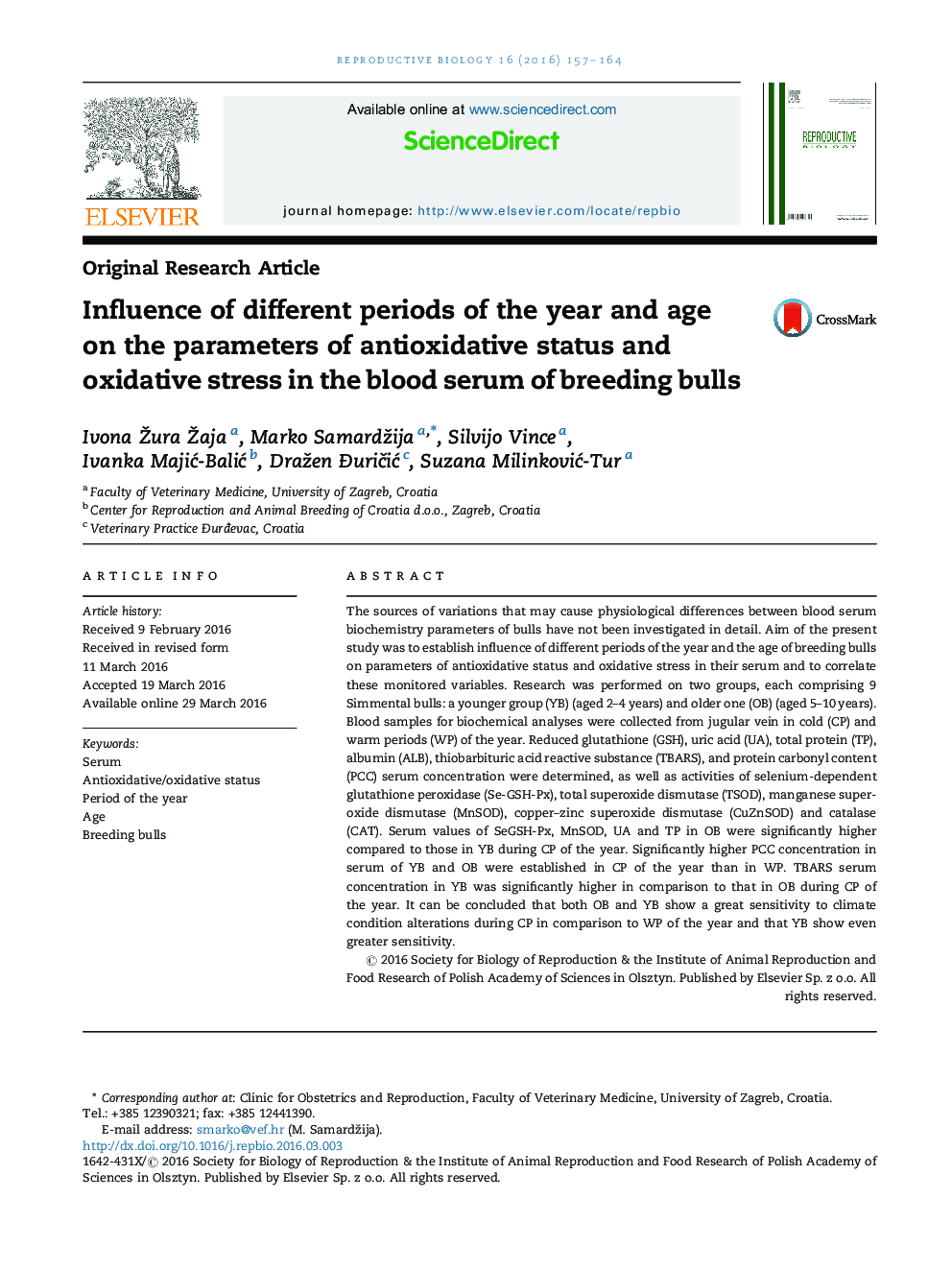| Article ID | Journal | Published Year | Pages | File Type |
|---|---|---|---|---|
| 2062337 | Reproductive Biology | 2016 | 8 Pages |
The sources of variations that may cause physiological differences between blood serum biochemistry parameters of bulls have not been investigated in detail. Aim of the present study was to establish influence of different periods of the year and the age of breeding bulls on parameters of antioxidative status and oxidative stress in their serum and to correlate these monitored variables. Research was performed on two groups, each comprising 9 Simmental bulls: a younger group (YB) (aged 2–4 years) and older one (OB) (aged 5–10 years). Blood samples for biochemical analyses were collected from jugular vein in cold (CP) and warm periods (WP) of the year. Reduced glutathione (GSH), uric acid (UA), total protein (TP), albumin (ALB), thiobarbituric acid reactive substance (TBARS), and protein carbonyl content (PCC) serum concentration were determined, as well as activities of selenium-dependent glutathione peroxidase (Se-GSH-Px), total superoxide dismutase (TSOD), manganese superoxide dismutase (MnSOD), copper–zinc superoxide dismutase (CuZnSOD) and catalase (CAT). Serum values of SeGSH-Px, MnSOD, UA and TP in OB were significantly higher compared to those in YB during CP of the year. Significantly higher PCC concentration in serum of YB and OB were established in CP of the year than in WP. TBARS serum concentration in YB was significantly higher in comparison to that in OB during CP of the year. It can be concluded that both OB and YB show a great sensitivity to climate condition alterations during CP in comparison to WP of the year and that YB show even greater sensitivity.
